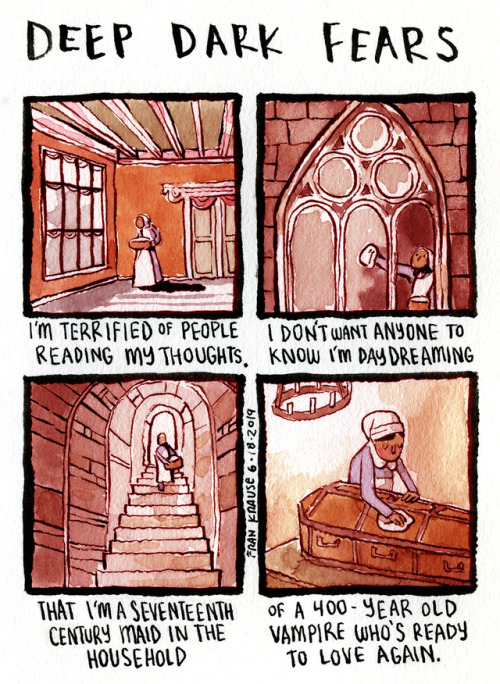Sometimes I Think About The Sculptors Hands That Moulded And Formed The Statues And Then I Touch The
sometimes I think about the sculptors hands that moulded and formed the statues and then I touch the cold stone and I feel our hands meet through time and space
More Posts from Gothphrodite and Others



This home in Woodstock, New York, is like an enchanted witch’s house.


The entrance alone, is amazing.


In the large main room, there’s a huge stone fireplace, a table, and a swing.



There’s also a work area in the corner.

A family room with a children’s play area.


I’m guessing this is either a bedroom or a sitting room.

Hallway leading to the various levels.


Look at the kitchen.




Master bedroom with some fashionable wigs and beautiful vintage dressing table.


Cool bath- look at all the vintage fixtures.

Here’s a man cave workshop.


And, there’s a vintage car in the garage.

What a dreamy house.
https://www.locationdepartment.net/locations/3051
““The Carrier Bag Theory of Fiction,” an essay Le Guin wrote in 1986, disputes the idea that the spear was the earliest human tool, proposing that it was actually the receptacle. Questioning the spear’s phallic, murderous logic, instead Le Guin tells the story of the carrier bag, the sling, the shell, or the gourd. In this empty vessel, early humans could carry more than can be held in the hand and, therefore, gather food for later. Anyone who consistently forgets to bring their tote bag to the supermarket knows how significant this is. And besides, Le Guin writes, the idea that the spear came before the vessel doesn’t even make sense. “Sixty-five to eighty percent of what human beings ate in those regions in Paleolithic, Neolithic, and prehistoric times was gathered; only in the extreme Arctic was meat the staple food.” Not only is the carrier bag theory plausible, it also does meaningful ideological work — shifting the way we look at humanity’s foundations from a narrative of domination to one of gathering, holding, and sharing.”
—
Siobhan Leddy in The Outline. We should all be reading more Ursula Le Guin
Her novels imagine other worlds, but her theory of fiction can help us better live in this one.
There’s a link to a PDF of Le Guin’s essay here.
(via protoslacker)










The terrible tomes of H. P. Lovecraft, as designed for “The Doom that Came to Atlantic City” by Lee Moyer.
-
 smallestchurch liked this · 10 months ago
smallestchurch liked this · 10 months ago -
 hallaig reblogged this · 10 months ago
hallaig reblogged this · 10 months ago -
 lovethythrall liked this · 1 year ago
lovethythrall liked this · 1 year ago -
 in-scape reblogged this · 1 year ago
in-scape reblogged this · 1 year ago -
 20owleyes liked this · 1 year ago
20owleyes liked this · 1 year ago -
 godsfavoriteblossom reblogged this · 1 year ago
godsfavoriteblossom reblogged this · 1 year ago -
 inhumanrampage reblogged this · 1 year ago
inhumanrampage reblogged this · 1 year ago -
 spiralseason reblogged this · 1 year ago
spiralseason reblogged this · 1 year ago -
 onlythoughtdaughter reblogged this · 1 year ago
onlythoughtdaughter reblogged this · 1 year ago -
 onlythoughtdaughter reblogged this · 1 year ago
onlythoughtdaughter reblogged this · 1 year ago -
 onlythoughtdaughter reblogged this · 1 year ago
onlythoughtdaughter reblogged this · 1 year ago -
 onlythoughtdaughter reblogged this · 1 year ago
onlythoughtdaughter reblogged this · 1 year ago -
 metatrela liked this · 1 year ago
metatrela liked this · 1 year ago -
 xinyaaaaaaaan liked this · 1 year ago
xinyaaaaaaaan liked this · 1 year ago -
 rawmustardfourtwenty reblogged this · 1 year ago
rawmustardfourtwenty reblogged this · 1 year ago -
 irinou liked this · 1 year ago
irinou liked this · 1 year ago -
 dearthmahmoud liked this · 1 year ago
dearthmahmoud liked this · 1 year ago -
 star-counter reblogged this · 2 years ago
star-counter reblogged this · 2 years ago -
 thelittlewitch-blog reblogged this · 2 years ago
thelittlewitch-blog reblogged this · 2 years ago -
 thelittlewitch-blog liked this · 2 years ago
thelittlewitch-blog liked this · 2 years ago -
 fionasjoanofarcphotoshoot liked this · 2 years ago
fionasjoanofarcphotoshoot liked this · 2 years ago -
 sweetest0ne liked this · 2 years ago
sweetest0ne liked this · 2 years ago -
 catherinebronte liked this · 2 years ago
catherinebronte liked this · 2 years ago -
 genderstarbucks liked this · 2 years ago
genderstarbucks liked this · 2 years ago -
 pawsteps reblogged this · 2 years ago
pawsteps reblogged this · 2 years ago -
 pawsteps liked this · 2 years ago
pawsteps liked this · 2 years ago -
 sarahjacobs liked this · 2 years ago
sarahjacobs liked this · 2 years ago -
 ianshulnain liked this · 2 years ago
ianshulnain liked this · 2 years ago -
 runningwithfawns reblogged this · 2 years ago
runningwithfawns reblogged this · 2 years ago -
 runningwithfawns liked this · 2 years ago
runningwithfawns liked this · 2 years ago -
 goldenheartdove liked this · 2 years ago
goldenheartdove liked this · 2 years ago -
 snuffboyf liked this · 2 years ago
snuffboyf liked this · 2 years ago -
 gentleauroch reblogged this · 2 years ago
gentleauroch reblogged this · 2 years ago -
 justmyownreblogs liked this · 2 years ago
justmyownreblogs liked this · 2 years ago -
 veryvizzini liked this · 2 years ago
veryvizzini liked this · 2 years ago -
 deliciasdemari reblogged this · 2 years ago
deliciasdemari reblogged this · 2 years ago








